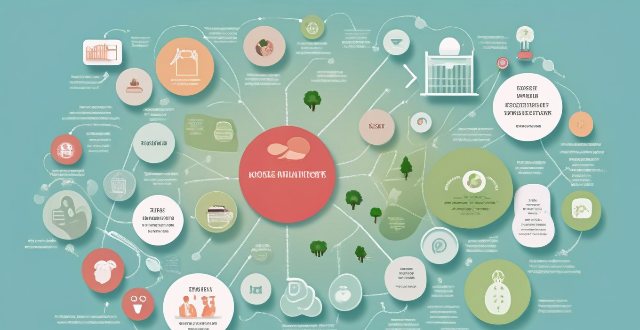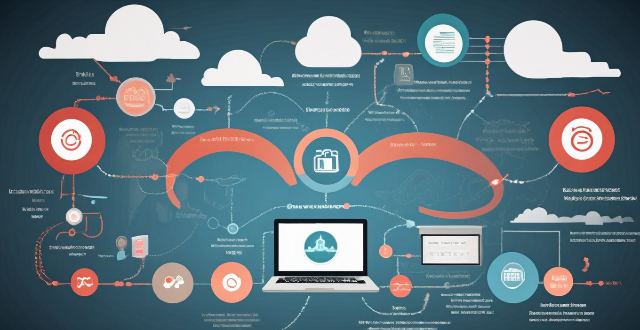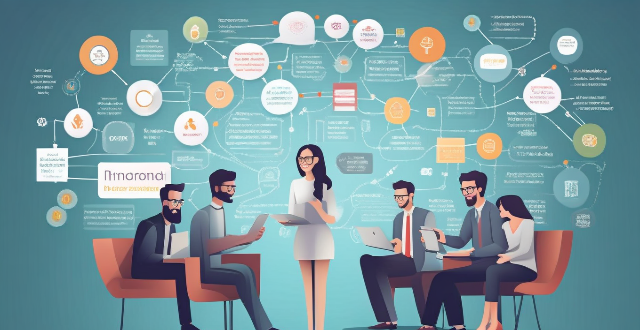Education Access

What policies have countries implemented to ensure equal access to education for both sexes ?
Policies for Equal Education Access: Key Policies and Challenges

How do cultural factors influence women's access to education ?
The text discusses cultural factors that influence women's access to education, including gender roles, perceptions of capability, social norms, economic priorities, religious teachings, and ethnic customs. These factors can either facilitate or hinder educational opportunities for women, shaping their roles in society and the economy. Addressing these barriers requires a multifaceted approach that includes challenging harmful cultural norms, promoting gender equality, and advocating for policies that support female education.

How do remote education platforms address the digital divide issue ?
The digital divide in education refers to the gap between students who have access to modern information and communication technology (ICT) and those who do not. Remote education platforms can help bridge this divide by providing affordable technology, broadband internet access, training and support, and collaborating with schools and districts. These strategies ensure that all students have equal access to educational resources and can fully participate in online learning environments.

What is the impact of climate change on children's access to education ?
Climate change affects children's access to education through extreme weather events, health impacts, food security issues, and displacement and migration. These challenges make it difficult for children to attend school or continue their studies. It is crucial to take action now to mitigate the effects of climate change and protect the future of education.

How does the COVID-19 pandemic affect girls' education globally ?
In this article, the author discusses the impact of the COVID-19 pandemic on girls' education globally. The main points are as follows: 1. **Increased Dropout Rates**: Many girls have been unable to continue their studies due to lack of access to technology, internet connectivity, and a safe learning environment at home. This has led to an estimated 12 million additional child marriages and 20 million secondary school-aged girls at risk of not returning to school. 2. **Worsened Gender Inequality**: Girls are more likely to be responsible for household chores and caregiving duties during lockdowns and school closures, leading to reduced time and energy for studying and lower academic performance. Additionally, the economic impact of the pandemic has forced many families to prioritize boys' education over girls', further widening the gap in educational opportunities between genders. 3. **Limited Access to Sexual and Reproductive Health Services**: The closure of schools and other essential services has limited girls' access to sexual and reproductive health services, including contraception, pregnancy testing, and counseling. This has led to an increase in unintended pregnancies and childbirth complications. 4. **Reduced Learning Opportunities**: The shift to remote learning has presented challenges for both students and teachers, particularly in low-income countries where resources are scarce. Many girls do not have access to computers or smartphones, making it difficult for them to participate in online classes or complete assignments. Furthermore, the lack of face-to-face interaction with teachers and peers can negatively impact girls' social development and emotional well-being. 5. **Loss of Female Teachers**: The pandemic has also led to the loss of female teachers, who play a crucial role in promoting gender equality in education. Some female teachers have had to leave their jobs to support their own families or care for sick relatives, creating a shortage of qualified female teachers, particularly in rural areas where they are already underrepresented. 6. **Conclusion**: To address these issues, it is essential for governments and organizations to prioritize girls' education in their response efforts, ensuring that they have access to technology, safe learning environments, sexual and reproductive health services, and qualified female teachers. By doing so, we can help build a more equitable future for all children around the world.

How will these education policy updates impact the future of education in our society ?
Education policy updates may increase access to education, emphasize STEM education, and improve student outcomes.

How do remote education platforms ensure data privacy and security ?
Remote education platforms ensure data privacy and security through encryption, access controls, two-factor authentication, regular security audits, and data retention policies. These measures help protect user data during transmission and storage, restrict access to sensitive information, add an extra layer of security, identify and fix vulnerabilities, and minimize the risk of data breaches.

How do these education policy updates align with global education standards ?
Education policy updates align with global education standards in various ways, including curriculum reform, diverse assessment methods, teacher professional development, technology integration, and prioritizing student well-being and inclusivity. These efforts aim to equip students with the necessary skills and knowledge to thrive in a globalized world.

What role do education systems play in promoting scientific literacy among women ?
Education systems play a crucial role in promoting scientific literacy among women by providing equal access to education, encouraging female teachers, offering extracurricular activities, addressing gender bias, and providing mentorship programs.

How can we ensure that marginalized communities have access to vaccines ?
Ensuring that marginalized communities have access to vaccines is crucial for global health equity. This article explores strategies to address barriers such as lack of awareness, limited access to healthcare services, mistrust of the healthcare system, financial barriers, and logistical challenges. Education and information campaigns, mobile clinics and outreach programs, building trust through partnerships, providing affordable or free vaccines, and improving infrastructure and supply chain management are among the solutions discussed. By implementing these strategies, we can work towards a world where everyone has equal access to life-saving vaccines.

How does climate change exacerbate gender inequality in access to resources and decision-making ?
Climate change exacerbates gender inequality by disproportionately affecting women and girls in access to resources and decision-making. Women often have limited access to resources such as water, food, and land due to cultural norms, lack of education, and poverty. They also have limited participation in decision-making processes due to cultural norms and lack of education. To address these issues, it is important to prioritize gender equality in climate change adaptation and mitigation strategies by ensuring that women's voices and experiences are taken into account when making decisions.

How can we improve access to healthcare services in developing countries ?
Improving access to healthcare services in developing countries is crucial for ensuring the well-being of individuals, regardless of their geographical location or economic status. Key strategies include investing in healthcare infrastructure, training and recruiting healthcare professionals, implementing community-based health programs, and utilizing technology and innovation. By adopting a multifaceted approach that addresses various aspects of the healthcare system, it is possible to make significant strides in improving access to quality healthcare services for all individuals living in developing countries.

What are the implications of these education policy updates for higher education ?
Education policy updates have significant implications for higher education institutions, students, and educators. These policies can impact the quality of education, access to education, and the overall structure of higher education. One of the main implications is the potential for curriculum changes, which could lead to changes in course offerings, teaching methods, and assessment practices. Another implication is the need for faculty development, as educators may need to update their skills and knowledge to effectively implement new requirements. Changes to financial aid policies and admissions policies can also impact access to higher education. For example, if a policy requires universities to admit a certain percentage of underrepresented groups, institutions may need to revise their admissions processes to ensure compliance. Finally, education policy updates can influence the structure of higher education by modifying accreditation standards and promoting inter-institutional collaboration. It is essential for higher education stakeholders to stay informed about these policy updates and adapt accordingly to ensure that they continue to provide high-quality educational experiences for all students.

What are the benefits of using a remote education platform for learning ?
Using a remote education platform for learning offers numerous benefits that enhance the overall learning experience, including flexibility and convenience, personalized learning, collaboration opportunities, cost savings, access to quality education, improved learning outcomes, and environmental sustainability.

How do remote education platforms support teachers in delivering quality education ?
Remote education platforms support teachers in delivering quality education by enhancing teaching and learning experiences, improving accessibility and flexibility, and promoting collaboration and communication. These platforms allow for personalized learning, interactive learning, and real-time feedback, enabling students to learn at their own pace and in a way that suits them best. Additionally, remote education platforms enable anywhere, anytime learning, providing diverse learning opportunities and access to high-quality education regardless of location. Finally, these platforms promote collaborative learning and effective communication between teachers and students, creating engaging and effective learning environments.

What role does technology play in modern education systems ?
The text discusses the role of technology in modern education systems, highlighting its ability to enhance accessibility, personalize learning experiences, improve collaboration and communication, refine assessment methods, and facilitate lifelong learning. It also acknowledges potential challenges such as the digital divide, overreliance on technology, and data privacy concerns. The conclusion emphasizes that while technology offers numerous opportunities for education enhancement, it should be integrated thoughtfully to avoid potential pitfalls.

What are the latest updates in education policy ?
The latest updates in education policy focus on improving the quality of education, increasing accessibility, and preparing students for future challenges. Key areas of reform include remote learning and online education, inclusive education, curriculum reform, teacher professional development, and funding and resource allocation. These changes aim to create a more effective and equitable educational system for all students.

How do women's health and education projects address global disparities ?
Women's health and education are crucial for global development, affecting communities' well-being. Women's health projects ensure access to quality healthcare services, including prenatal care and family planning. Education initiatives promote gender equality by increasing girls' enrollment rates and eliminating classroom biases. Economic empowerment projects provide job training and microfinance loans to women entrepreneurs. These efforts create a more equitable world where everyone can thrive.

Do unlimited data plans really provide unrestricted internet access ?
Unlimited data plans are marketed as offering unrestricted internet access, but there are often limitations in practice. These include network management practices during peak hours, fair use policies that may reduce speeds for excessive usage, and throttling after reaching certain data thresholds. Additionally, coverage areas and hidden costs can also impact the user experience. It's important to understand the specific terms of your plan before assuming you'll have completely unfettered access.

Can remote education platforms replace traditional classroom learning ?
The text discusses the pros and cons of remote education platforms and concludes that they cannot fully replace traditional classroom learning due to lack of social interaction, difficulty with self-motivation, and limited hands-on experience. However, a combination of both methods may provide a well-rounded education.

How can low-income countries ensure access to education and healthcare for all citizens ?
Low-income countries can ensure access to education and healthcare for all citizens by prioritizing public spending, implementing policy reforms, encouraging community participation, developing infrastructure, investing in human resources, exploring financing options, integrating technology, forming partnerships, and regularly monitoring and evaluating progress.

What role does education play in promoting inclusivity through policy-making ?
Education is crucial in promoting inclusivity by providing equal opportunities, breaking down barriers, enhancing social mobility, promoting cultural awareness, and empowering individuals. Education policies should prioritize accessibility, diversity, teacher training, funding for underrepresented groups, and accountability measures to ensure that all individuals have equal access to education and can succeed regardless of their background or abilities.

Can you explain the concept of gender gap in education ?
The gender gap in education refers to the disparity in educational opportunities, outcomes, and achievements between males and females. It encompasses various aspects of the education system, including access to education, quality of education, and academic performance. Girls may face cultural, social, and economic barriers to attending school, while schools may not provide adequate facilities or resources for female students. Additionally, girls tend to outperform boys in subjects such as reading and writing, while boys tend to do better in math and science. Addressing the gender gap in education requires attention and action from educators, policymakers, and society as a whole to create a more equitable and just education system.

What are the challenges faced by remote education platforms ?
The challenges faced by remote education platforms include technical issues such as slow internet connections, inadequate hardware, and software compatibility. Educational quality can be affected due to limited interaction, the need for curriculum adaptation, and difficulties in assessment. Accessibility is a concern due to the digital divide, language barriers, and disabilities. Teacher training and support may be lacking, leading to suboptimal learning experiences for students. Student motivation and mental health can also be impacted by reduced face-to-face interaction and prolonged periods of isolation. These challenges underscore the need for continuous improvement and innovation in remote education to ensure equal opportunities for all students.

What is the significance of education in achieving the Sustainable Development Goals ?
Education is essential for achieving the Sustainable Development Goals (SDGs), as it promotes equality, economic growth, health and well-being, peace and justice, and environmental sustainability. By providing access to quality education for all, we can empower individuals, break down barriers to social and economic mobility, foster a better understanding of environmental issues, and encourage responsible consumption and production patterns. Education is also crucial for promoting gender equality and empowering women and girls, developing the skills needed to adapt to changing economic conditions and job markets, improving health literacy and promoting healthy behaviors, promoting human rights, democracy, and the rule of law, and building bridges between different cultures.

What are the potential benefits of using blockchain technology in the education sector ?
Blockchain technology can transform the education sector by providing immutable records, decentralized networks, enhanced collaboration through smart contracts, and improved communication. These benefits include maintaining accurate academic records, ensuring research data integrity, automating administrative tasks, and fostering teacher-student interaction. As the technology advances, it is expected to have a significant impact on the future of education.

What is multicultural education and why is it important ?
This article defines multicultural education as an approach to teaching and learning that embraces the diversity of students' cultural backgrounds, experiences, and perspectives. It emphasizes the importance of incorporating multiple cultures into the curriculum, promoting equity and inclusivity, and fostering cross-cultural understanding and respect. The article highlights the key elements of multicultural education, including culturally relevant curriculum, equity and access, critical thinking, empathy, and global citizenship. It also explains why multicultural education is important, citing its role in promoting social justice and equality, enhancing cognitive development, preparing students for a global society, fostering empathy and tolerance, supporting personal identity formation, and contributing to academic achievement. The article concludes that multicultural education is essential for creating an inclusive learning environment that celebrates diversity, promotes social justice, and prepares students for success in a global society.

How does the lack of women's education impact economic development ?
This essay discusses the impact of lack of women's education on economic development. It emphasizes that educated women are more likely to participate in the workforce, earn higher wages, and invest in their families and communities. Educated women are also more likely to start businesses and contribute to innovation and entrepreneurship. The lack of women's education leads to lower labor force participation, uneducated women earn lower wages and have limited career growth opportunities, limited access to credit and financial services makes it difficult for women to start businesses or invest in their communities, and reduced innovation and entrepreneurship hinders economic development. Therefore, investing in women's education is essential for promoting economic growth and development.

What are the pros and cons of using social media in education ?
The article discusses the advantages and disadvantages of using social media in education. Advantages include enhanced communication, collaboration and networking, access to diverse information, skill development, and flexible learning. Disadvantages are distractions and time management, privacy concerns, misinformation, academic integrity issues, equity concerns, and teaching challenges. The conclusion states that careful consideration and strategic implementation are key to harnessing the benefits of social media in education while minimizing its drawbacks.

How do these new education policies impact students and teachers ?
The implementation of new education policies can have significant effects on both students and teachers. Potential impacts on students include changes in academic performance, mental health, and access to education. For teachers, new policies may require professional development, adjustments in teaching approaches, and increased workload and stress levels. It is crucial to consider the potential effects before implementing any changes and ensure that they align with the goals of providing high-quality education for all students.